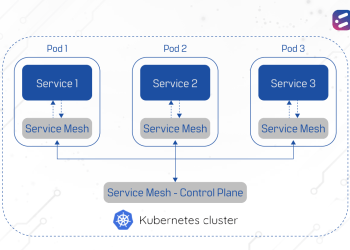When you need to meet delivery deadlines, and so make quick fixes to your code that make it harder to maintain, this results in additional time, effort and cost down the road. This is called Technical Debt in app redevelopment.
This is a widespread problem that affects businesses of all kinds – in fact, the IDC estimates that through the next year, 90% of organizations will need to remediate technical debt incurred around the design, quality, and security of applications they rapidly developed during the pandemic.
So, how do you minimize or eliminate technical debt as you redevelop an application? Here is a five-step plan that could help.
Five ways to minimize technical debt in Application Redevelopment
1. Keep timelines realistic
The easiest way to pile on technical debt is to ask for too much in too little time. It is a common misconception that app redevelopment or app modernization is easier than building from scratch – many businesses do not allow for sufficient development time, which results in corners being cut.
Consult with your developers and fix realistic timelines for app redevelopment. Forcing one month’s work into two weeks is a classic recipe for technical debt.
2. Track and manage technical debt
While pursuing the target of complete elimination, accept that in the real world, technical debt is going to exist. Track this debt as it occurs and plan to manage it effectively so that the impact can be minimized.
A Gartner report says companies that manage their technical debt effectively ship 50% faster, have happier teams and save millions of dollars in revenues.
Technical debt causes delays in releasing new features, is a stumbling block to innovation, and often demotivates developers. You could consider creating a “technical debt document” that lists specific issues, along with the timelines for addressing them – factor in some sprints just to address debt.
3. Set the right KPIs
Key Performance Indicators (KPIs) help identify issues caused by technical debt. And since they’re part of the basic review process, they’re more likely to be rectified quickly. Create KPIs around product performance, and speed of development that specifically address technical debt.
For example, set a speed KPI for your website. If it’s not meeting the KPI, that’s a technical debt issue that needs to be resolved. You already know the speed of your legacy website and your development partner knows the industry standard. Using both data points, it’s easy to set realistic KPIs.
4. Try low-code
Low-code is a way of developing applications, where instead of writing lines of code, developers use visual, intent-driven development tools. In a way, low-code manages technical debt at the design, development, and deployment stages as it encourages business and IT to work collaboratively; is 10 times faster than traditional app development processes while maintaining quality control; is easier to maintain; and reduces overhead.
5. Maintain a long-term focus
Discuss maintenance, upgrades, and technical debt as a major topic in all project meetings. One strategy is to dedicate time at meetings to illustrate what happens if technical debt is ignored. Talk about how prioritizing the elimination of technical debt translates to immediate benefits. Keep technical debt on the backlog so developers know it is there and it is important.
You don’t want to come back for another app redevelopment too soon because you accepted workarounds and accrued too much technical debt!
CloudNow’s application modernization services help you leapfrog legacy applications into the world of modern cloud technology, while our strong suite of processes, checks and balances help us minimize technical debt on the projects we deliver. Give a call to our App development experts today .













